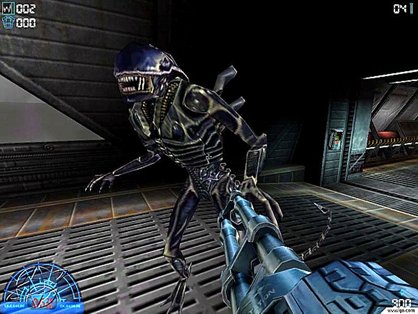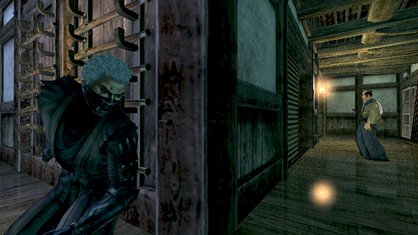The sneaky history of stealth games
Hide and seek through the ages

It’s a simple premise that has expanded from outwitting a single enemy unit into outthinking collective AI. Instead of staying out of a guard’s line of sight, you must now utilize dynamic light sources to make sure your shadow isn’t detected. Instead of a small room with one predestined outcome, you have entire islands with bountiful foliage to disguise whatever you feel like doing.
And perhaps our favorite question - “Do we kill that guy or let him live and find a way around?” For your pleasure is a quick, pictorial history through the stealth subgenre. Happy hunting and don’t forget to comment on your favorite stealth games.

Wolfenstein series - 1981-2009
In the original Castle Wolfenstein for the Apple II, you needed to slowly traverse the Nazi castle, find secret plans and get out alive. Mostly you’d spend the game sneaking past guards with disguises. It wasn’t until 3D (the third game) that killing was necessary. In fact, many stealth elements were deleted from 3D to make the game quicker. We’ve been shotgunning mutant Nazis ever since. With glee.

Metal Gear and Metal Gear Solid series - 1987-2008
Hideo Kojima can almost be directly responsible for incorporating stealth elements into modern action/adventure games. Each game is designed so that you can play without engaging the enemy. The NES originals were the first mainstream stealth games on consoles. Solid 2 introduced collective/group AI for patrolling squads, while Solid 3 introduced camouflage to the genre.

Teenage Mutant Ninja Turtles – 1989
You would think any time ninjas are in a game, there would be stealth. Maybe because this game used stealth in a crappy and unforgiving way - in which you avoided tanks on an overworld map - the Ninja Turtles were then known for beat-‘em-ups. It’s cool, we like beating the crap out of numerous enemies with our ninja weapons anyway.

Alien versus Predator series – 1994-2003
In this series of games (originating on Jaguar), you’re able to play as a colonial marine, Predator or Alien. As the Predator, you’re able to use a cloaking device to become invisible and can hunt using an infrared vision mode.

Clock Tower series – 1995-2003
In this classic survival-horror series, you explore a creepy castle while a demented killer - the aptly titled Scissorman - hunts for your blood. A 2D point-and-click adventure on the PC, CT makes use of the gamepad on SNES and PlayStation for your evading abilities. Even if Scissorman is hilariously slow, it was always frightening whenever that little guy showed up.
Sign up to the GamesRadar+ Newsletter
Weekly digests, tales from the communities you love, and more

Oddworld series – 1997-2001
This critically acclaimed series is almost forgotten by time. Control either Abe (in the 2D PlayStation games) or Munch (in the Xbox follow-up) to save members of your species through communication and possession. Very rarely do you engage enemy Slogs (bad guys).

Final Fantasy VII – 1997
There are few parts where sneaking is in order: a brief segment when you infiltrate Shinra headquarters or don a disguise to sneak into a military parade. Did we mention an extended segment where you dress in drag to rescue Tifa? Or our favorite: tip-toeing out of Aerith’s house after you survived an explosion. Totally a guy thing to do.

GoldenEye – 1997
After our fifth failed firefight against multiple Russians, we realized that destroying security cameras and Judo-chopping those Pinkos from behind was the best way to go during certain missions of this N64 fave.

Tenchu series – 1998-present
Released months before the original Metal Gear Solid - making it the first 3D stealth game ever, Tenchu demonstrated how to make a ninja game properly. Scale rooftops, toss daggers or slowly stalk an enemy right before slicing his throat. The subsequent titles were all a little ‘eh.’

Thief series – 1998-2004
The Dark Project holds the distinction of being the first 3D stealth game on the PC. Not only was it the first game to also utilize lighting and shadows for hiding, but also the first to use audio cues like footsteps and eavesdropping. Incredibly immersive and one of the best PC series’ of all time.

Legend of Zelda series – 1998-2007
The famed adventure series doesn’t usually favor flight over fight, but there are sections that rely on your cunning to progress. For example, Ocarina of Time tasked you with sneaking by guards into Hyrule castle, Wind Waker had you avoiding beasties in the Forsaken Fortress and Phantom Hourglass’ Temple of the Ocean King was filled with beefy soldiers you couldn’t best.


